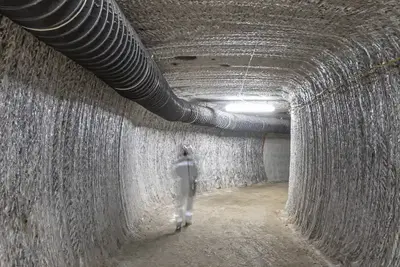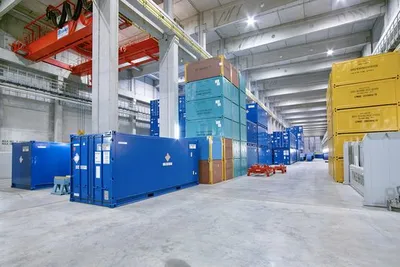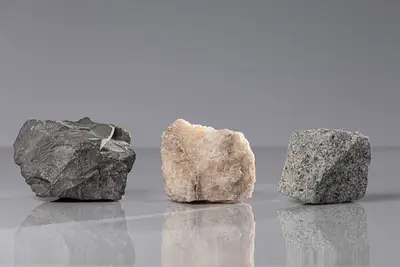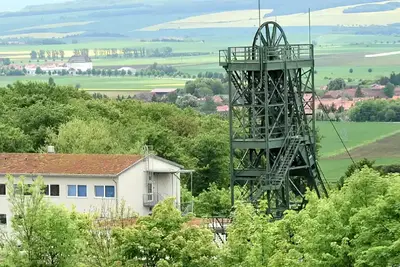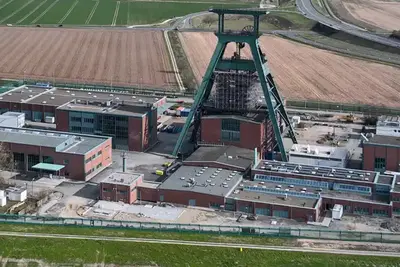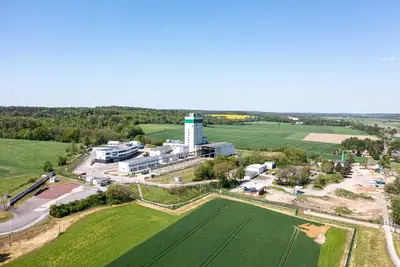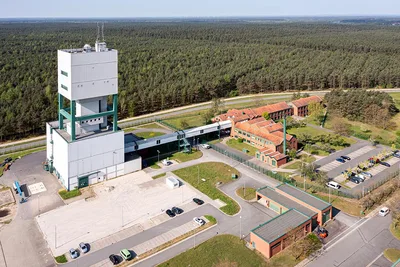Treatment, packaging and storage
- The handling of radioactive materials is strictly regulated in Germany.
- Wherever radioactive waste arises, it must be collected, sorted and professionally packaged.
- Only approved containers may be used for disposal.
- Longer-term storage above ground involves a greater risk that substances will enter the environment.
In Germany, the handling of radioactive substances – including the professional disposal of radioactive waste – is regulated by the Atomic Energy Act (AtG) and subsequent ordinances. Responsibility lies with the establishments at which waste arises, which must collect and sort the waste and treat it in accordance with the legal requirements before it is packaged into approved containers. Once this process – known as conditioning – is complete, the filled containers (waste packages) must be stored until they can be transported to and disposed of in a repository.
Industrial plants or hospitals at which only small quantities of radioactive waste arise must deposit this waste at the facilities provided by the Federal states (“Federal state collecting depots”). Waste from Federal research or the decommissioning of GDR nuclear power plants (Greifswald and Rheinsberg) is the responsibility of the Federal government. Likewise, the Federal government is responsible for the retrieval and subsequent disposal of radioactive waste from the Asse II mine.
Different containers depending on requirements
Radioactive waste must undergo special treatment before it is stored in a repository. The treatment and packaging of radioactive waste is known as conditioning. Only professionally conditioned, inspected and approved containers may be placed in a repository.
In order to package all types of radioactive waste, with their differing degrees of heat emission, to an equal level of safety and in order to comply with the disposal conditions, various processes and/or facilities are available for conditioning depending on the consistency, size and nature of the waste material. At the same time, the containers for highly radioactive materials can only be approved for a repository in the course of the site selection. The containers are subject to different requirements depending on the host rock for the disposal of high-level radioactive waste.
In Germany, various containers were developed and approved for the disposal of low- and intermediate-level radioactive waste following the approval of the Konrad repository. These containers differ in shape, material and size. For example, there are cylindrical concrete and cast-iron containers or containers of various sizes made of steel, concrete and cast iron.
Storage above ground is only a temporary solution
Despite the technical barriers provided by the packaging or storehouse, storage above ground only ever offers limited protection. In order to minimise the potential risk of radiation exposure for humans and the environment, radioactive waste in Germany must therefore be separated from the environment (biosphere) and put in deep, stable rock strata for the purpose of disposal. This is intended to ensure that, for a period of up to a million years, today’s limit values for radioactivity are not exceeded and – therefore – no risks arise for humans or the environment due to the release of radioactive substances.
![[Translate to Englisch:] Anlage zum Trocknen von Abfallfässern Plant for drying waste containers in Lubmin.](/fileadmin/_processed_/b/5/csm_20141119-Lubmin-Fasstrocknungsanlage-555x370_681c8fb7be.webp)
Only solid or solidified radioactive waste may be disposed of in a repository. Substances can be dried in special facilities prior to packaging.
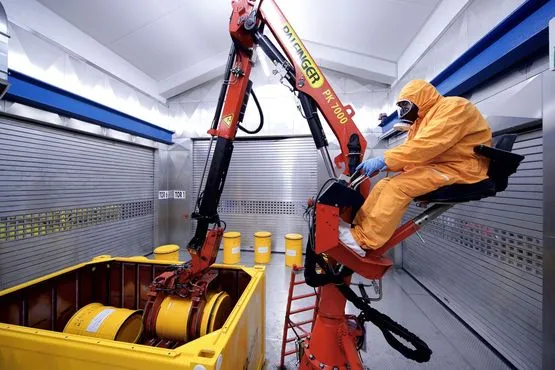
Following multiple packaging steps, drums are placed in larger containers that are then filled with concrete. © KTE Karlsruhe


